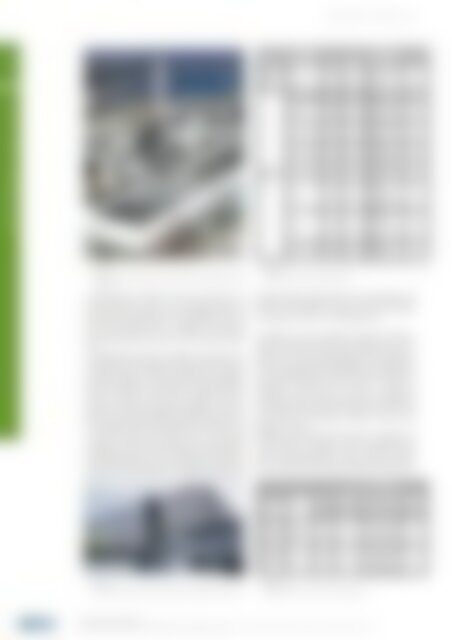atw - International Journal for Nuclear Power | 03.2022
Ever since its first issue in 1956, the atw – International Journal for Nuclear Power has been a publisher of specialist articles, background reports, interviews and news about developments and trends from all important sectors of nuclear energy, nuclear technology and the energy industry. Internationally current and competent, the professional journal atw is a valuable source of information. www.nucmag.com
Ever since its first issue in 1956, the atw – International Journal for Nuclear Power has been a publisher of specialist articles, background reports, interviews and news about developments and trends from all important sectors of nuclear energy, nuclear technology and the energy industry. Internationally current and competent, the professional journal atw is a valuable source of information.
www.nucmag.com
Sie wollen auch ein ePaper? Erhöhen Sie die Reichweite Ihrer Titel.
YUMPU macht aus Druck-PDFs automatisch weboptimierte ePaper, die Google liebt.
<strong>atw</strong> Vol. 67 (2022) | Ausgabe 3 ı Mai<br />
Tab. 3.<br />
Major radioactive waste dumps inside ChEZ.<br />
ENVIRONMENT AND SAFETY 38<br />
Waste<br />
Category<br />
Low,<br />
intermediate<br />
and high<br />
level<br />
Low and<br />
intermediate<br />
level<br />
Waste Dump<br />
Volume<br />
(m³)<br />
Weight<br />
(t)<br />
Rudyy Lis 50,0000 250,000<br />
Pischane plato 57,300 91,700<br />
Naftobaza 102,000 181,000<br />
Yaniv Station 30,000 15,000<br />
Stara Budbaza 171,000 316,000<br />
Nova Budbaza 150,000 70,000<br />
Kopachi 110,000 90,000<br />
Pripiyat 16,000 11,000<br />
Waste Nature<br />
Stones, metal<br />
scrap, ground,<br />
wood<br />
Solid waste,<br />
sand<br />
Stones, metal<br />
scrap, ground,<br />
wood<br />
Stones, metal<br />
scrap, ground,<br />
wood<br />
Rein<strong>for</strong>ced<br />
concrete, metal<br />
structures<br />
Rein<strong>for</strong>ced<br />
concrete, metal<br />
structures<br />
Wood,<br />
household<br />
rubbish and<br />
constructional<br />
wastes<br />
Rein<strong>for</strong>ced<br />
concrete<br />
structures,<br />
stones, metal<br />
scrap<br />
Activity<br />
(10 12 Bq)<br />
374<br />
6.8<br />
40<br />
37<br />
1,100<br />
185<br />
33.3<br />
25.9<br />
Chystohalivka 160,000 150,000<br />
Equipment,<br />
transport<br />
facilities, etc.<br />
3.7<br />
| Fig. 2<br />
Destroyed reactor building of Unit 4 with indications of storage places <strong>for</strong> HLW<br />
containers.<br />
commissioned in 2020. This new structure was<br />
constructed and moved over the original shelter to<br />
provide safe containment and conditions over the<br />
next one hundred year to support the required<br />
decommissioning activities <strong>for</strong> this nuclear legacy<br />
site.<br />
A considerable quantity of radioactive substances is<br />
contained in the ChNPP cooling pond (see background<br />
of Figure 2). Based on their low mobility,<br />
the radionuclides were localized in sludge deposits<br />
under a massive water layer, which served as<br />
powerful barrier preventing atmospheric release.<br />
However, after the shutdown of the last power unit,<br />
the recharge of the cooling pond was turned off, as<br />
a result of which the water level in the pond<br />
dropped. This led to the exposure of radioactively<br />
contaminated areas of the cooling pond, which in<br />
turn increased the risk of wind-driven transfer of<br />
radioactive contamination. In 2002, cooling pond<br />
| Fig. 3<br />
New Safe Confinement <strong>for</strong> safe containment of the destroyed reactor unit 4.<br />
| Tab. 3<br />
Major radioactive waste dumps inside ChEZ.<br />
sludge deposit concentrations were estimated to be<br />
(16 ±3) × 10 13 Bq <strong>for</strong> 137 Cs, (2.4 ±0.9) × 10 13 Bq <strong>for</strong><br />
90 Sr, and (5.3 ±1.9) × 10 11 Bq <strong>for</strong> Pu [3].<br />
In addition to the tremendous number of radionuclides<br />
contaminating the surrounding area accumulated<br />
in soils, groundwater, and vegetation,<br />
there is approximately 2,000,000 m³ of radioactive<br />
waste resulting from early intervention and decontamination<br />
activities. This waste is stored in<br />
numerous waste dumps and three engineered<br />
storage facilities that are well below state of the art.<br />
An overview is provided in Tables 3 and 4 and<br />
Figures 4 – 6 [8].<br />
Following international agreements, operation of<br />
reactor Units 1 through 3 were terminated and<br />
await decommissioning. From all three power<br />
units, nuclear fuel has been unloaded and moved to<br />
Tab. 4.<br />
Waste<br />
Category<br />
Intermediate<br />
and high<br />
level, longlived<br />
Low and<br />
Intermediate<br />
level, longlived<br />
Low and<br />
intermediate<br />
level, shortlived<br />
Engineered radioactive waste storages inside ChEZ.<br />
Waste<br />
Storage<br />
Pidlisnyi<br />
3 rd line of<br />
ChNPP<br />
Volume<br />
(m³)<br />
Weight<br />
(t)<br />
7,040 14,080<br />
| Tab. 4<br />
Engineered radioactive waste storages inside ChEZ.<br />
Waste Nature<br />
Metal, wood,<br />
waste<br />
Activity<br />
(10 12 Bq)<br />
1.0<br />
3,960 7,920 Reactor pieces 2,500<br />
26,200 41900<br />
Buryakivka 554,000 1,048,600<br />
Ground, metal<br />
scrap (partially in<br />
containers)<br />
Ground, scrap<br />
metal, concrete,<br />
equipment in<br />
containers,<br />
transport facilities<br />
391<br />
2,460<br />
Environment and Safety<br />
<strong>Nuclear</strong> Threat Resulting from Russian Military Occupation of Chornobyl Exclusion Zone ı Anatolii V. Nosovskyi, Vyacheslav M. Shestopalov, Iurii Shybetskyi, Jürgen Krone
















